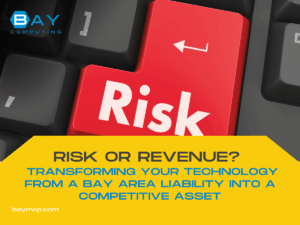How to Build a Cybersecurity Plan That Actually Works
Every business faces cyber risks—no matter its size or industry. Hackers, malware, and data breaches are real threats that can harm a company’s data and reputation. An effective cybersecurity plan uses clear steps to reduce risks, protect information, and prepare for possible attacks.
A plan that actually works is not just a list of rules or software updates. It starts with knowing what needs protecting, understanding likely threats, and using simple but strong protections that every team member can follow. With a practical plan in place, organizations can handle problems sooner and limit the damage if an attack happens.
This blog will explain what goes into a strong cybersecurity plan and show how any team can put these steps into action today. Readers will learn how to take control over their digital safety without complicated language or advanced tech skills.
Core Components of an Effective Cybersecurity Plan
A strong cybersecurity plan must focus on understanding an organization’s risks, setting clear rules, managing access tightly, and preparing for attacks. These elements work together to protect critical assets and respond to threats quickly and clearly.
Risk Assessment and Asset Identification
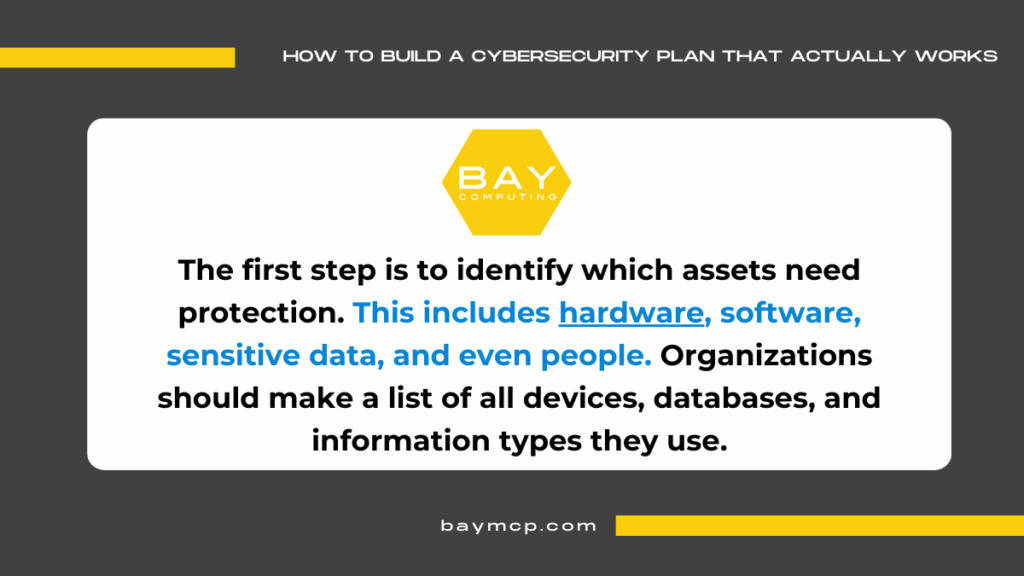
The first step is to identify which assets need protection. This includes hardware, software, sensitive data, and even people. Organizations should make a list of all devices, databases, and information types they use.
Next, they must assess the risks facing these assets. This means looking at possible threats, such as malware, human error, or system failures. Assessing risk helps prioritize which resources get the most protection.
A risk assessment should include:
- Asset list: Hardware, software, and data
- Possible threats: Both internal and external
- Vulnerabilities: Weak passwords, outdated software, etc.
- Impact: How loss or damage would affect operations
Identifying gaps early allows for planning and using resources where they matter most.
Defining Security Policies and Procedures
Security policies are written rules that guide behavior and system use. Well-defined policies ensure everyone knows their role in protecting information and following safe practices.
Procedures give step-by-step instructions for routine and emergency tasks. Common policies cover password creation, software updates, personal device use, and data sharing. They should address remote work, safe web browsing, and handling confidential data.
Organizations should regularly review and update their policies to reflect new risks. Employees need training on both the rules and the reasons behind them.
Key security policies may include:
- Acceptable use policy
- Password management
- Data classification and handling
- Remote access guidelines
Access Control Strategies
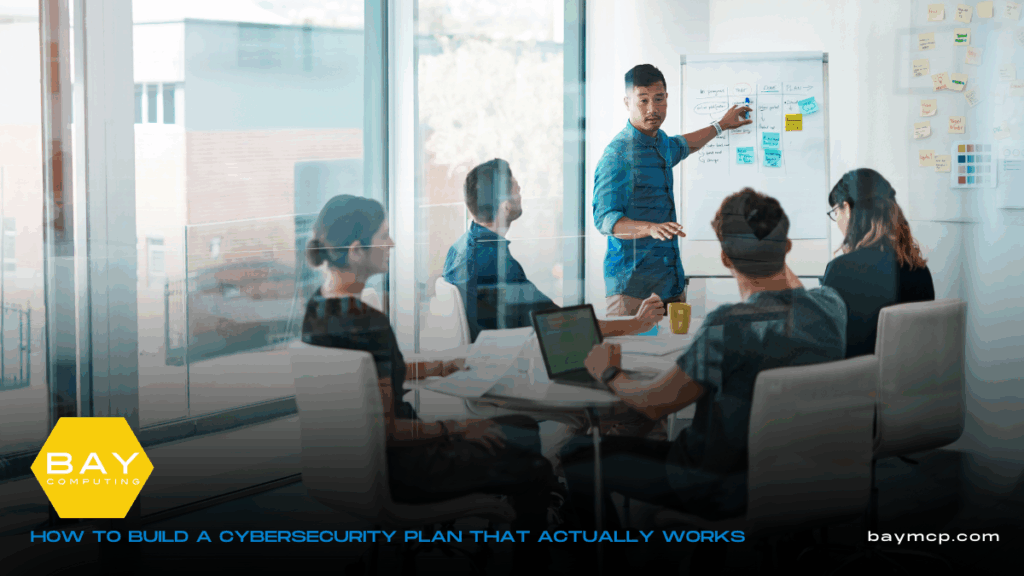
Access control focuses on making sure only the right people can reach sensitive systems or information. This limits damage if an account is stolen or misused.
Organizations use several methods to control access, such as:
- User accounts: Individual login credentials
- Strong authentication: Multi-factor authentication (MFA) and complex passwords
- Role-based access: Giving people access based on their job
Systems should log all access attempts for auditing. Former employees’ accounts need to be disabled right away. Regular reviews help ensure people still need the access they have.
Restricting permissions reduces the risk of both mistakes and intentional misuse.
Incident Response Planning
Even with strong defenses, some attacks or breaches still happen. An incident response plan outlines what to do if there is a cyber incident.
The plan should include:
| Step | Description |
|---|---|
| Detection | Spotting a problem or attack |
| Containment | Stopping the spread or damage |
| Eradication | Removing threats from systems |
| Recovery | Restoring normal operations |
| Lessons learned | Reviewing actions and updating the plan |
Staff should know who to contact in a crisis. Regular drills or tabletop exercises improve readiness and show where the plan needs changes. Clear steps shorten recovery time and help reduce harm during an incident.
Implementing and Maintaining Cybersecurity Measures
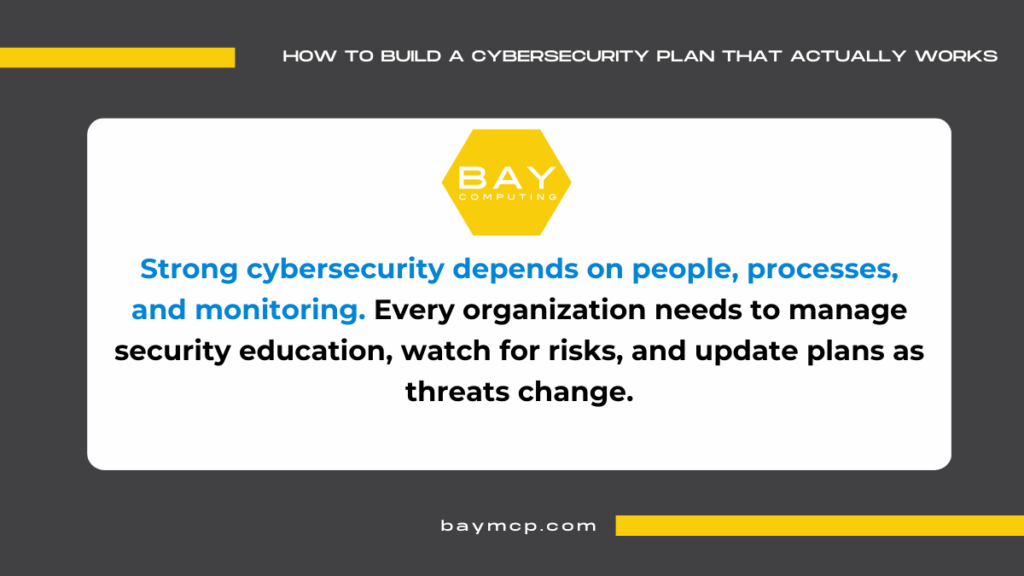
Strong cybersecurity depends on people, processes, and monitoring. Every organization needs to manage security education, watch for risks, and update plans as threats change.
User Training and Awareness Programs
Employees are often the first line of defense against cyber threats. Regular training helps staff recognize phishing emails, suspicious links, and unsafe behaviors. Interactive workshops, short online courses, and simulated phishing tests make learning active and engaging.
Clear guidance on password management, device use, and secure data sharing reduces risk. Posting reminders in common areas or sending monthly tips by email keeps security top of mind. Leadership should encourage staff to report security incidents immediately without fear of punishment.
Creating a culture of security turns every employee into part of the defense system. A strong focus on ongoing education helps decrease human error and protects sensitive information.
Periodic Security Audits
Security audits check how well existing protections work. These reviews involve inspecting networks, software, and physical systems for weaknesses. They can reveal unpatched systems, misconfigurations, or out-of-date policies.
A mix of internal self-assessments and third-party audits ensures a fresh perspective. Using checklists and automated tools makes the process thorough and consistent. Documentation of findings is critical so leaders can track progress and address critical gaps.
Audits should follow a set schedule—quarterly or yearly—to keep risks in check. Immediate action on audit findings reduces the chance of data breaches or compliance problems.
Vendor and Third-Party Risk Management
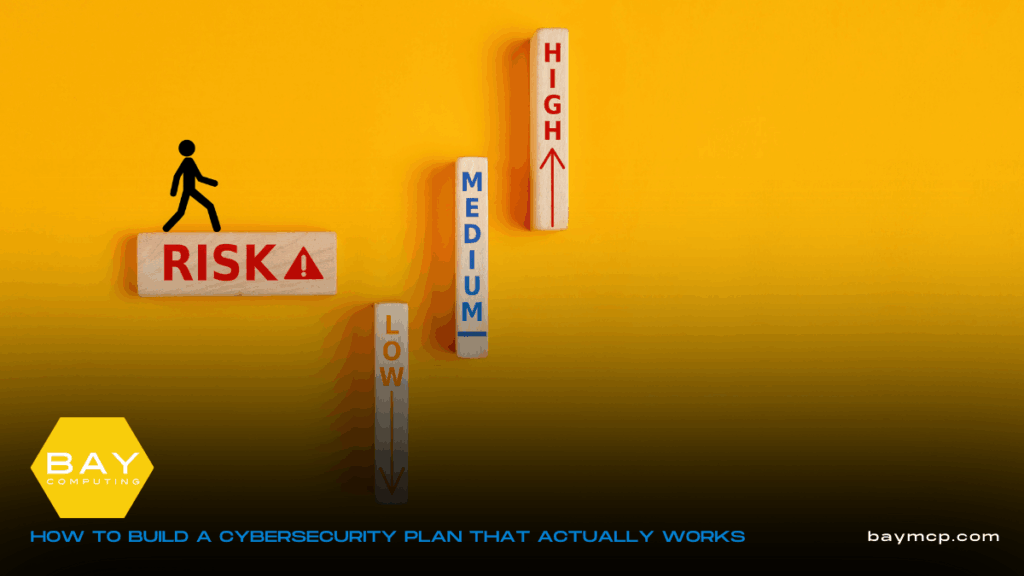
Vendors and outside partners often have access to company data or systems. Each vendor’s security posture must be assessed before granting access. Basic steps include requiring vendors to complete security questionnaires and show proof of security measures.
Contracts should include clear rules for data protection, responsible use, and incident response. Regular reviews of third-party access help limit exposure if a partner is breached. Organizations should keep a record of all vendors and what data or systems they can reach.
If a vendor has a security problem, fast communication and a solid plan reduce harm. Limiting access to only what’s needed is one of the simplest ways to lower risk.
Continuous Improvement and Plan Review
Cybersecurity threats change constantly. Plans and defenses must evolve to match new attacks and business needs. Regularly schedule reviews of all security policies, procedures, and incident response strategies.
Use past incidents, new technology, and feedback from audits to update the plan. Involve staff from IT, legal, and management to cover all aspects. Tests and simulated cyberattacks (“tabletop exercises”) show if the plan works in real situations.
Changing or improving controls, updating training, and rechecking threat landscapes ensure protection remains strong. Keeping the plan current is key to minimizing new risks as they emerge.
Ready to Build a Cybersecurity Plan That Actually Works?
Protecting your business from today’s cyber threats starts with a solid, practical strategy. At Bay Computing, we help small and mid-sized businesses create and implement cybersecurity plans that actually work—without the tech overwhelm. From risk assessments and access controls to incident response and ongoing support, our team ensures your systems stay secure, compliant, and resilient. Don’t wait for a breach to take action. Contact us today to schedule your free consultation and take the first step toward a safer, smarter business.




